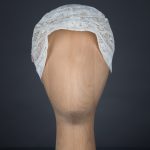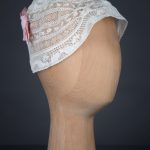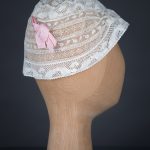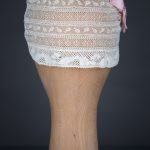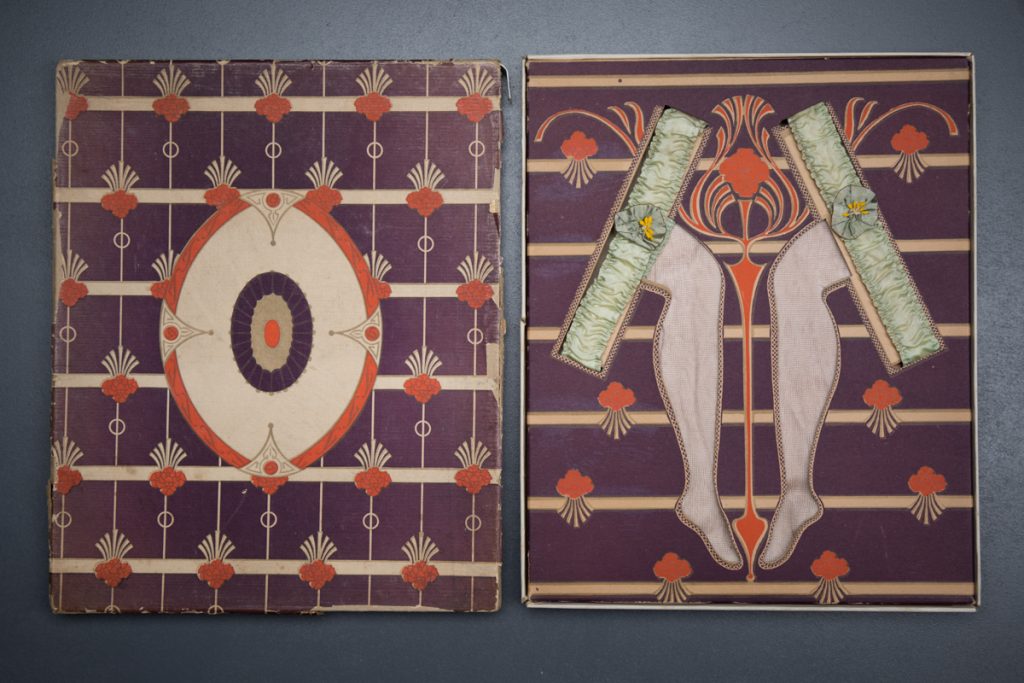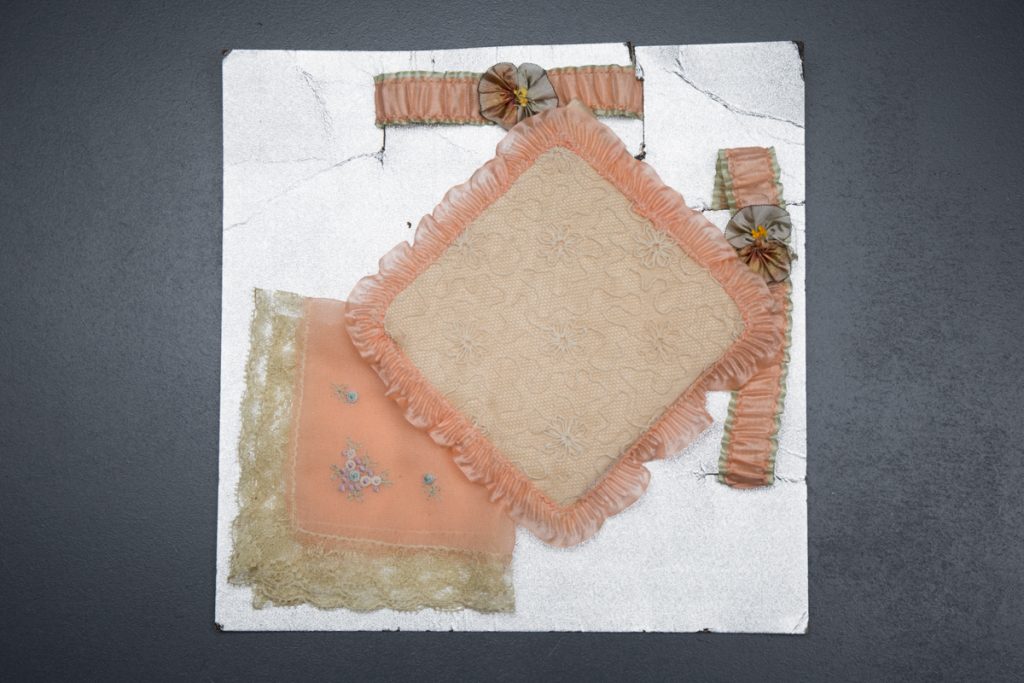Boudoir caps acted as a marker of adulthood in women and receiving one could constitute a rite of passage into adulthood for girls. In a recollection of Christmas 1916 in British Columbia, Clare, the daughter of a successful real estate agent, remembered being given a homemade boudoir cap along with a nightgown. She considered the cap a gift “to make a small girl think that she was getting to be a lady” (Mole, 73). This does not just show the great popularity of the cap throughout the English speaking world, but also how universal the connotations with adulthood and associations with the upper classes were.
Chapter Two: A Rite Of Passage Into Adulthood
Cotton Leavers Lace & Silk Bow Boudoir Cap
Date: c.1920s
Origin: Great Britain
Fabric: Cotton leavers lace
Brand: Custom made
This boudoir cap has been constructed from narrow strips of cotton leavers laces, which have been carefully machine stitched together and overlapped to curve around the head. It is embellished with a single pink silk bow.
The American Vogue recommended the boudoir cap as a gift suitable for women and debutantes but never for girls. They often appeared among instructions relating to debuting and marriage such as in the magazine’s 1913 list of the items of a trousseau. Even though the article began with claiming that buying a large trousseau is a mistake, it continued to recommend buying four boudoir caps among many other items (Vogue, Nov 1, 1913 (New York), 142). It is remarkable here that the long list did not include ‘small accessories’ which shows that the magazine considered boudoir caps to belong to the essential basics. Even debutantes constrained by a tighter budget were still encouraged to own a boudoir cap. An article on ‘Smart Fashions for Limited Incomes’ from 1912 included tips like repurposing an old boarding school skirt as the foundation for a house gown outfit and using a small invisible muffler to prevent sweat marks on lace collars. Yet ‘for the débutante’s afternoon rest’ buying a pale blue house gown with a matching boudoir cap trimmed with tiny pink roses and a bow was considered to be money well spent (Vogue (New York), Jan 1, 1912, 37f). While Vogue’s readers might not have seen the same pressing necessity to own and wear a boudoir cap as its editors did, it demonstrates that women interested in a middle-class lifestyle were consistently presented with the cap as an intrinsic part of it.
These garter gift sets fulfilled a similar purpose to the boudoir cap gifts recommended by American Vogue, acting as a symbol for the rite of passage into womanhood. Indeed, these gifts may have been the first adult lingerie that many young girls owned. The fabrics and details are similar to those found in boudoir caps: fine silks, embroidery and lace trims.
Navigation
Chapter One: Introduction & The Boudoir Cap’s Predecessors
Chapter Two: A Rite Of Passage Into Adulthood
Chapter Three: Glamour For All
Chapter Four: An Affordable And Attainable Way Of Achieving The Boudoir
Chapter Five: A Safe Version Of Sex Appeal
Chapter Seven: Dress For Undressing

